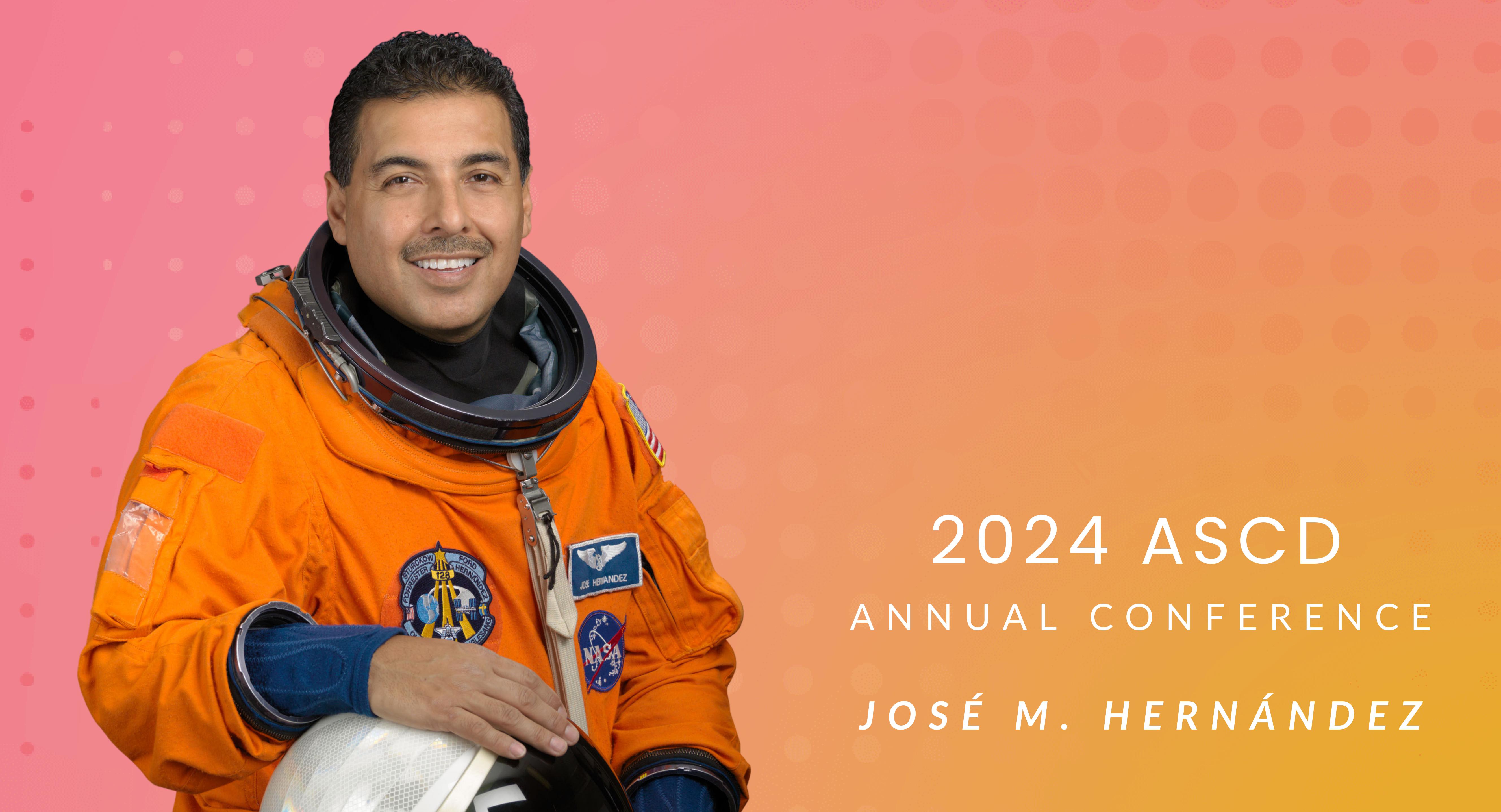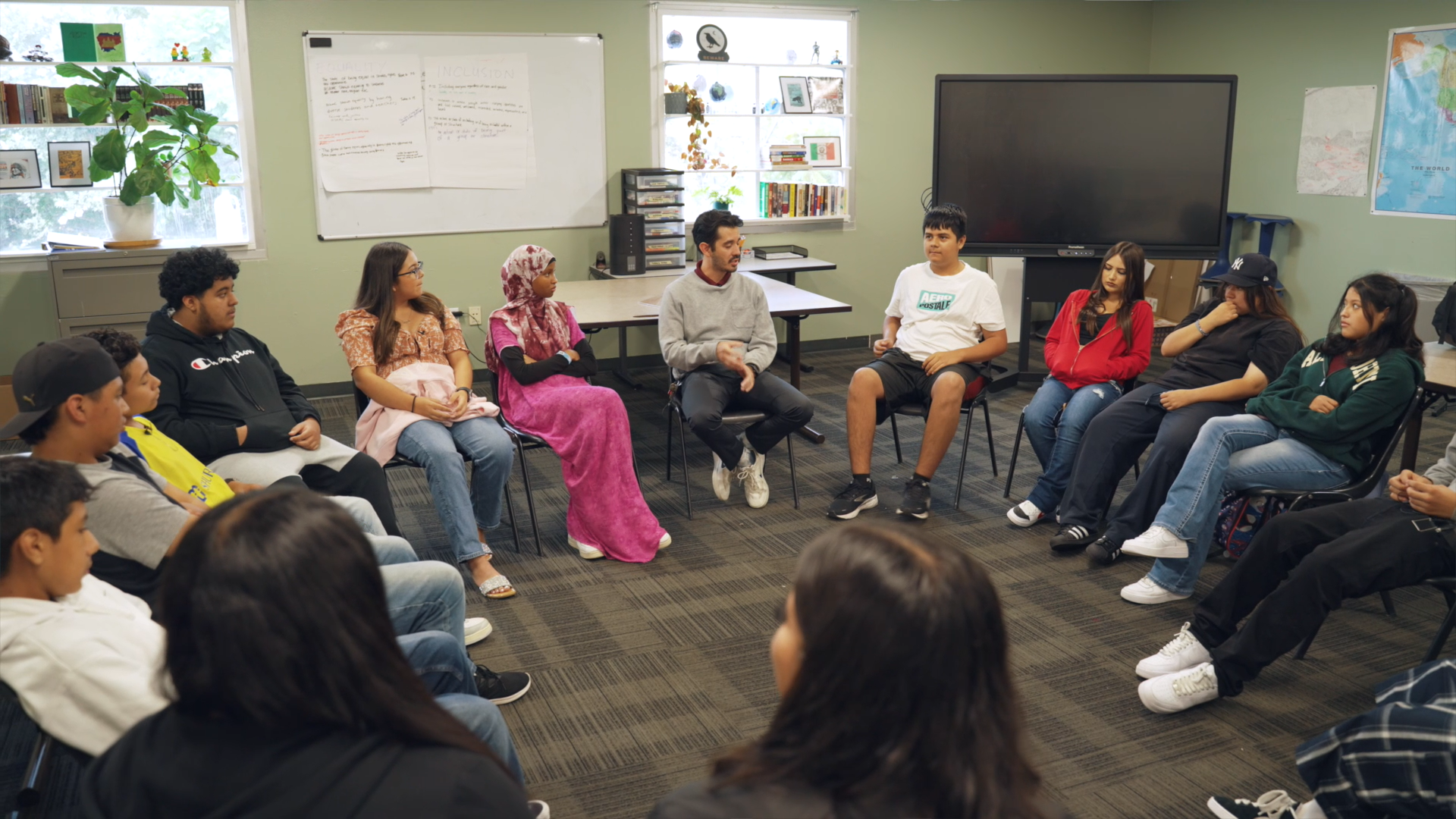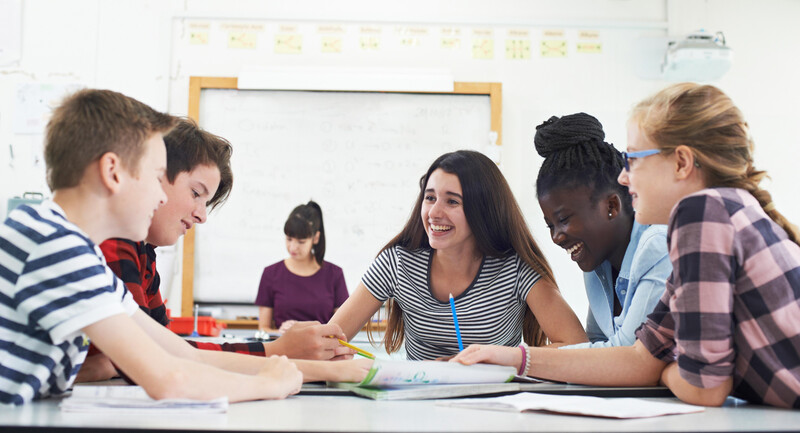I spent most of my winter evenings cheering for the United States athletes in Pyeongchang competing in the most rigorous and challenging competition in the world. They showed talent, commitment and sheer grit on the world stage, with more pressure than I could have handled at their age. I think about their motivation, what makes them successful and how we can instill some of those characteristics in our students. The athletes clearly want to achieve and have high levels of investment and self-motivation. Encouraging our students to have a similar drive for excellence starts with instilling the belief that this excellence is attainable. From the beginning, the teacher, much like an athlete’s coach, must start a student’s academic journey with empowerment in an educational environment where it’s safe to explore and find one’s own passion.
Empowering and motivating students involves giving them a voice to express their beliefs, perspectives and cultural backgrounds. I challenge schools to think beyond the surface of including student voice in lessons and incorporate it deeply by establishing high expectations for students with effective goal-setting, ultimately improving academic achievement.
Amplifying student voice is not just asking questions to check for understanding or if they relate to a certain character in a story. It’s also to listen to their rationales about what they are learning and why, allowing them to set goals and observing them persevere when it gets tough.
Researcher John Hattie provides quantitative information about the most impactful influencers in student achievement, revealing that students with high self-efficacy are able to remain calm when approaching challenging tasks, thus increasing their willingness to try new things. High self-efficacy also empowers one to set higher expectations for future performance (Wolf, 2007) and enables student voice, which is often undervalued.
We know Olympic athletes embody a level of high self-efficacy. Without the ability to stay calm under pressure and try new strategies and techniques, they wouldn’t qualify for competition, or set increasingly higher goals. If we know that self-efficacy is important for our students, how do we get them there?
Initially, it’s about connection to their learning in the classroom. Watching the Olympics, we heard athletes tell countless stories about what drew them to their sport. The same connection has to be made for our learners (Marzano, Pickering, & Heflebower, 2010). In my work, I specialize in coaching teachers to improve achievement through high leverage pedagogical strategies that make learning relevant. I tell them that their students need to be able to always answer three questions:
- What am I learning?
- Why am I learning it?
- How will you know I learned it?
The answers to these questions provide immeasurable insight and provide information if students are internalizing learning. Student voice is a powerful indicator of how invested they are in what they are learning, which can increase achievement.
For students to answer these questions, the teacher must communicate purpose clearly and effectively. When teachers know what students need to learn, and when students understand the criteria for success, this is called “teacher clarity.” Hattie’s research has determined “teacher clarity” as a high leverage influencer in the “zone of desired effects” yielding an effect size of 0.75. Hattie ascertained that effect sizes of 0.4 yields one year’s growth in one year’s time, and teacher clarity almost doubles this result (Hattie, 2012).
When students communicate what they are learning (versus “doing”) and why, and if they can define success, they’re much more likely to be empowered to achieve at high levels. These motivated students are more likely to stick to challenging tasks, ask questions for understanding and see mistakes as a pathway toward success. Connection empowers. Empowerment gives purpose. Purpose produces learning.
For Olympic athletes, connection to their sport is not enough to earn a spot on the team, let alone a gold medal. A connection is the starting point, but hard work without a goal is grinding and leads to burnout. Athletes can get up when they fall and stay focused because they know what they want and what it takes to get there.
Similarly, we must ensure students know where they are headed and why. Goal setting gives students a “long term vision with short term motivation” (Sasson, 2010). Setting goals increases motivation. Too often goals for students are set by adults, robbing students of the opportunity to set high but achievable goals for themselves. This misses a part of the equation required to solve the problem of high achievement. Can you imagine an athlete working day in and day out without defined goals? Too often we expect our students to be motivated without ever giving them a voice in what they learn, what they want to achieve and how they plan to get there.
Once students are clear on purpose and their goals, teachers can ensure their work increases in rigor. In order to grow and learn, productively struggle, which is the opportunity to push beyond our comfort zone to apply previously learned material in novel situations, has to be part of the equation. Productive failure activates parts of the brain that trigger deeper learning (Kapur, Lee and Lee, 2017). Growth and high achievement without some failure robs us of the opportunity to grow and learn at high levels, and we may fail to reach our potential. Failing and struggling forces us to look at situations in new ways. Through failure we find answers and success. Teachers who provide opportunities that have just the right amount of difficulty and complexity operate in the “Goldilocks zone,” which, according to Hattie yields an impressive effect size of 0.74 (Hattie, 2009).
Struggling and failure alone are not what gives us insight to learn and achieve our high goals. Once we fail, we need to take time to figure out why we fell short and what we should do differently next time. In addition to working hard and pushing toward their goal, Olympic athletes spend a great deal of time analyzing their own performances, reflecting upon what needs to be improved. This must become part of our students’ practice once they are hooked into their learning. When students are assessment capable learners (Hattie, 2012), it means they are aware of their current levels of performance compared to their goals. Teachers empower students to use their voice to reflect on their thinking and learning through small group learning (effect size 0.49), classroom discussions (effect size 0.82) and self-reported grades (effect size 1.44), — all high leverage influencers toward student achievement (Hattie, 2012).
Empowered students become active participants in their own success. When learning becomes relevant to their lives, students can be taught to be more self-efficacious, a necessary skill to persevere and push their learning higher. By studying how the most successful athletes in the world achieve in their sport, we can show our students how to embrace a world-class education that supports them in achieving the extraordinary.
Carrie Lupoli offers a unique perspective as an urban and international educator, administrator, speaker and consultant. Originally from Connecticut, Carrie moved to Asia in 2005, noting the inequities of opportunities for certain students. She founded Live and Learn, the largest organization in Southeast Asia dedicated to effective inclusion services. Carrie joined CT3 in 2014, leading the instructional work.








